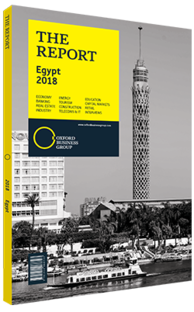Authorities invest in developing rail network in Egypt
While the trucking industry, Egypt’s main form of freight transport, is being constrained by the reduction in fuel subsidies and the higher cost of imported fuel as a result of local currency depreciation, rail is primed for development. Egypt has a long history of rail transport. The country developed a rail network in the 19th century under colonial rule, and has one of the most extensive networks in the Middle East and Africa. The national network has approximately 5000 km of track, a third of which is double track, and a rolling stock operation comprising 597 passenger trains, 224 freight trains, 3738 passenger coaches and 11,613 freight cars.
Importance Of Reform
However, rail currently accounts for just 8% of domestic passenger traffic and 2% of freight carriage. Nevertheless, this situation looks set to change in the near future as the government prioritises the development of rail transport. “From a government perspective, there is a strong will to activate the cargo-by-rail segment. It will be available for investors shortly,” Ahmed Mosa, co-founder of Masarat, a transport planning consultancy firm, and former advisor to the Ministry of Transport, told OBG.
The process of reforming the rail network requires a comprehensive approach, from restructuring the management and operation of the system, to investing heavily in infrastructure. In April 2016 the government took an important step in this regard when it sought to engage a consultant to look into the restructuring the relationship between the government and the Egyptian National Railways (ENR), the public owner of rail infrastructure and operator of rail services. The move was backed by technical assistance financing from the World Bank. This is considered significant given that the rail network remains a substantial fiscal drain on the government, absorbing up to 0.5% of public expenditure and as much as 0.3% of GDP through operating deficits.
New Projects
As the government looks to separate the infrastructure ownership and operation of rail services, it has embarked on the process of attracting investment for new rail projects. In March 2017 Hesham Arafat, the minister of transport, said the government was seeking up to €14.4bn worth of investment in new rail projects. The main focus is on three high-speed lines that will connect the country’s major tourism areas: Cairo to Luxor, Alexandria to Cairo, and Luxor to Hurghada. The biggest project is the €6bn Cairo-to-Luxor line. The 700-km route will take five years to complete and is projected to carry 3.4m passengers per year. According to Arafat, the line could achieve an internal rate of return of 9%, and the government is open to several investment models, including a build-operate-transfer structure. The Luxor-to-Hurghada line is estimated to cost €4bn, carry 1.5m passengers per year and offer a return of 10%, while the €3bn Alexandria-to-Cairo track will carry 2.3m passengers annually and offer a rate of return of 11%.
While much of the focus is on passenger services and the tourism industry, there are also significant opportunities for rail freight services. Given the shifting price competitiveness of road transport as fuel costs increase, the more fuel-efficient rail industry is poised to benefit. The government is targeting 25m tonnes of freight transported by rail by 2022. To this end, the government signed a $575m deal with General Electric (GE) for 100 new multi-use locomotives in June 2017. The deal also included 15 years of technical support and spare parts, training for Egyptian engineers and the upgrade of 81 trains purchased by ENR in 2008. The first 25 locomotives will be delivered in 2018.
If the administration’s full rail transport ambitions are met by private sector involvement, the deal signed with GE in 2017 will likely be just the beginning of rail investment over the next few years.
You have reached the limit of premium articles you can view for free.
Choose from the options below to purchase print or digital editions of our Reports. You can also purchase a website subscription giving you unlimited access to all of our Reports online for 12 months.
If you have already purchased this Report or have a website subscription, please login to continue.

